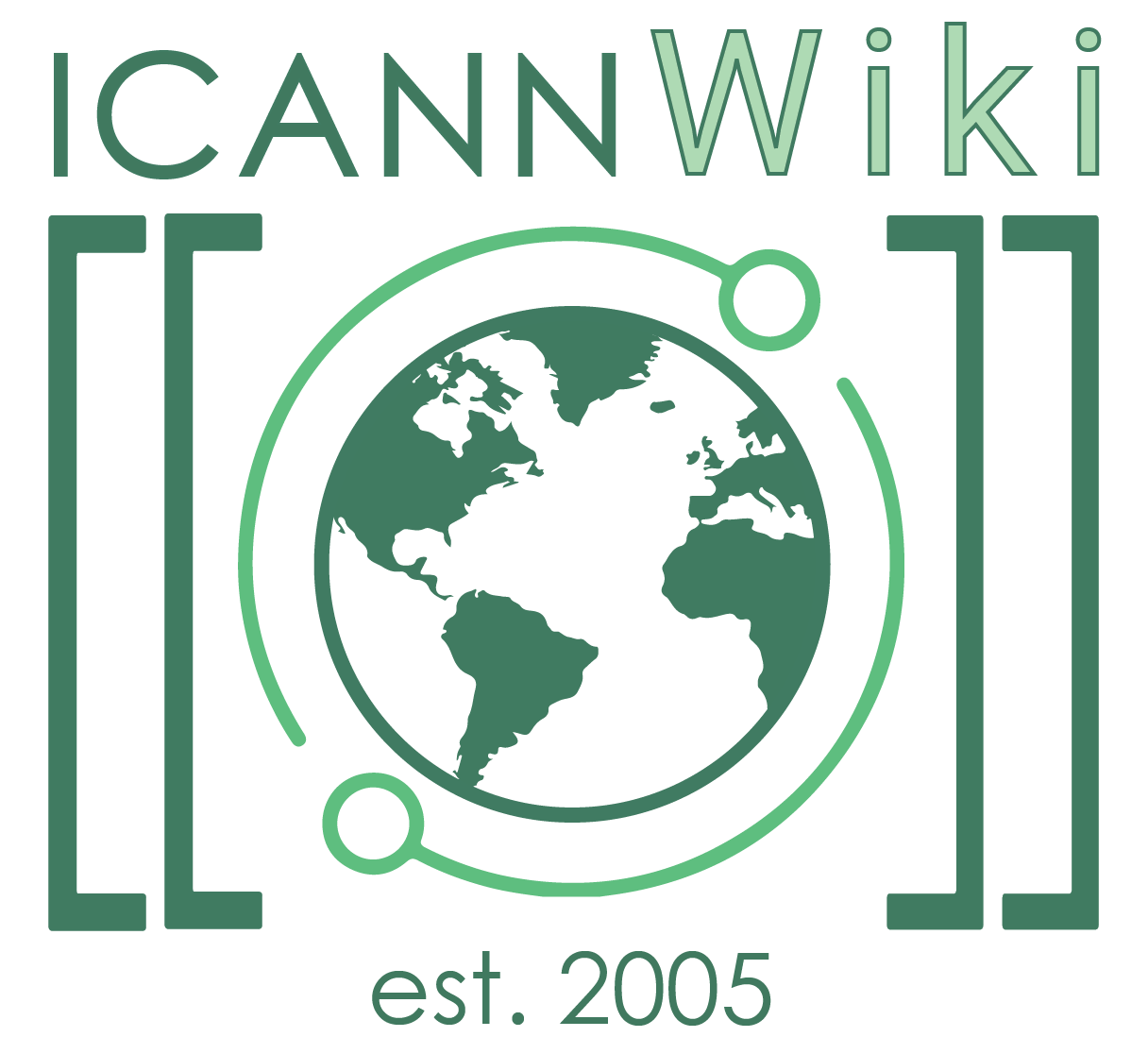Domain Name
A Domain Name is part of a URL and can be typed into a browser to find a particular web site. When a computer connects to the Internet, it uses a unique IP Address; because IP Addresses can be difficult to remember, the DNS or Domain Name System was put in place to correlate IP Addresses to domain names.[1]
ICANN is the ruling body that monitors the domain naming system.
Overview[edit | edit source]
Any domain name will abide by rules and procedures of the DNS. Domain names are used in various ways, networking contexts and addressing purposes. Depending on the type of domain one chooses to register, there are various features offered, such as: free email services, transfer and renewals, domain name options, DNS services and other such features. The individual host computers over the Internet use domain names in order to identify the host or hostnames. In this way, the hostnames are considered as a component of URLs (Uniform Resource Locators) for Internet resources like websites. However, the domain names are also used to simply identify labels to determine the ownership or maintain control over the resource.
How is a Domain Name Organized?[edit | edit source]
Basically, a domain names consists of an alphanumeric string which is divided into sections, with the most important sections separated by periods. For instance, if we take "icannwiki.org" the most important sections of this domain name are::
- The highest level of thedomain name, known as the Top-Level Domain is found at the far right; in this case it is the ".com" string.
- The TLD could have subdivisions, but in this case the information immediate to the left is the Second-Level Domain, represented by "icannwiki".[2]
A domain name is organized from right to left, with the specific descriptions in the left part of the domain name while the general descriptors are in the right part. The machine name (WWW) is positioned at the far left. Dots are used in order to separate the domain levels.
Types of Domain Names[edit | edit source]
- Generic Top-Level Domain Names
These domain name extensions began to appear in the 1980's, and now include: .com, .net, .mobi, etc. Anyone can register a domain name under this extension but these domains have restricted use. - Country Code Top-Level Domain Names
There are generic top-level extensions at a national level, which based on a code depending on the country, such as: France -.fr, Romania-.ro, United Kingdom-.uk, etc. National entities are responsible with the administration of these specific country codes. - Internationalized Domain Names
An IDN is an Internet domain name that uses the latest ICANN protocols and standards to support domain names written in multiple scripts and languages (non-ASCII characters).[3]
Domain Name, URL and Subdomain[edit | edit source]
A domain name is not an URL. The domain name is only a component of the URL, as the URL provides more information related to the address, protocol language, and other such issues. [4]: A domain name is the main address of a website, like "example.com", while a URL is the full web address that includes the domain plus additional details, like "https://example.com/page". A subdomain is a part of the main domain, such as "blog.example.com", used to organize different sections of a website.[5]
References[edit | edit source]
ICANNWiki resources: Special Pages | Content Guide | Documentation | Development || Maintenance: Articles needing attention | Candidates for deletion || Projects: Internet & Digital Governance Library
